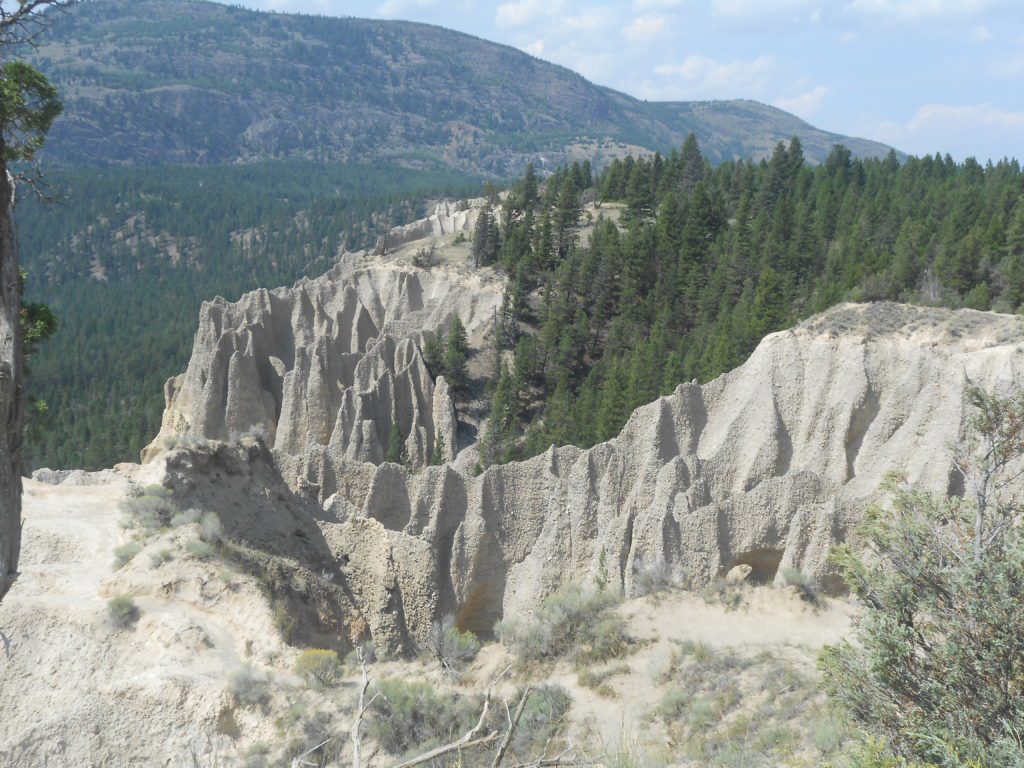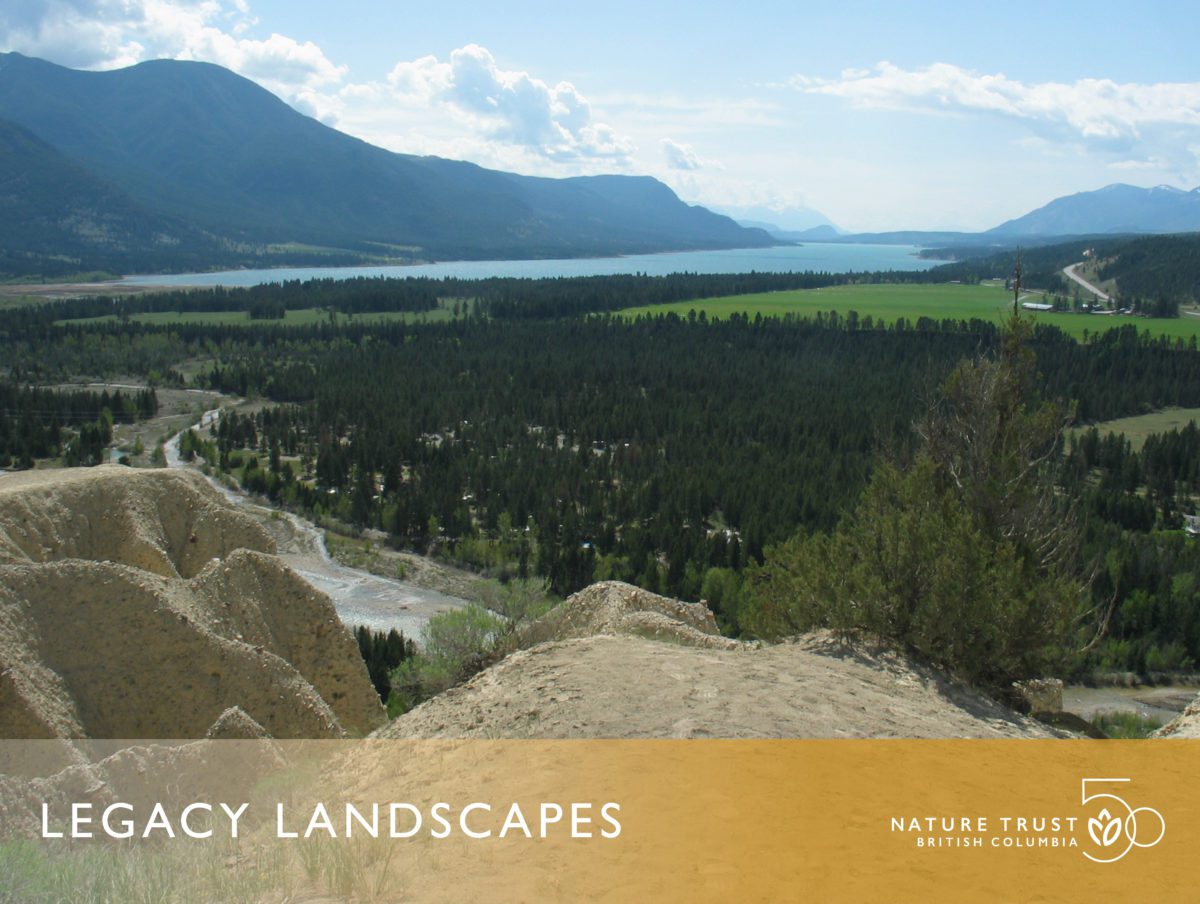
Walk with us through Hoodoos, an astounding property that covers 3,922 hectares and is The Nature Trust of BC’s largest property.
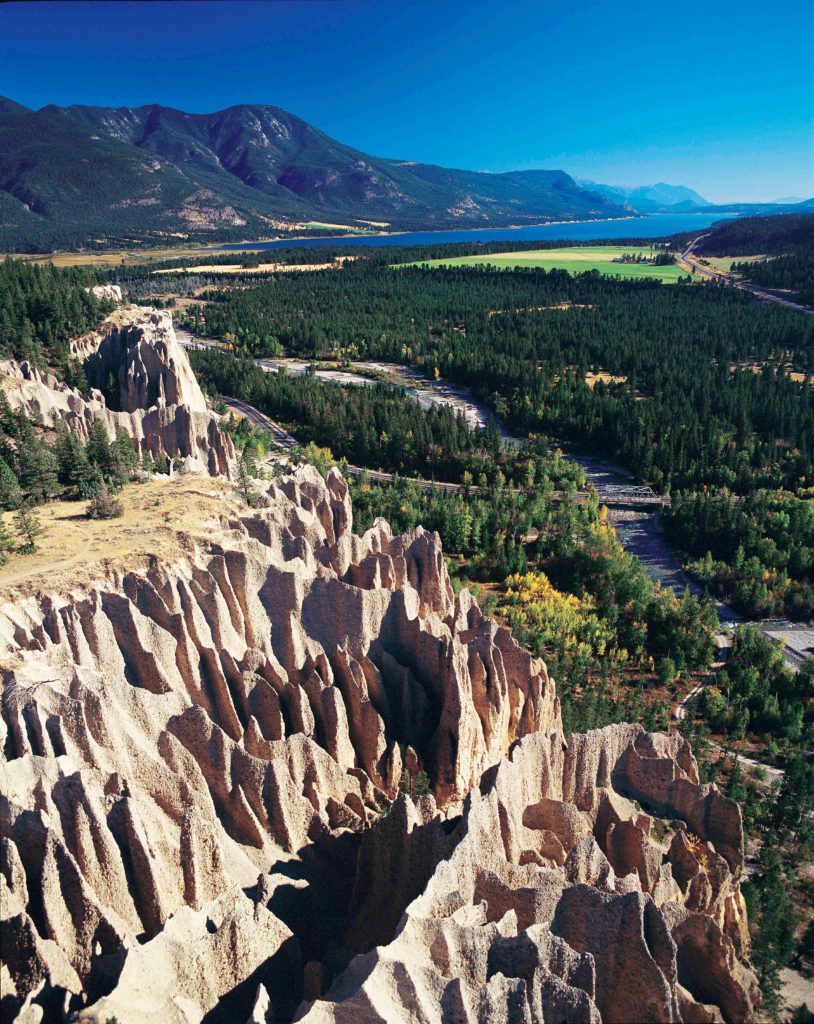
Walk through the vast grasslands, the golden grasses reflecting the sun. Many species of birds and mammals are supported by this habitat and you search for them as you walk. You see a small white and brown vesper sparrow perched on a shrub.
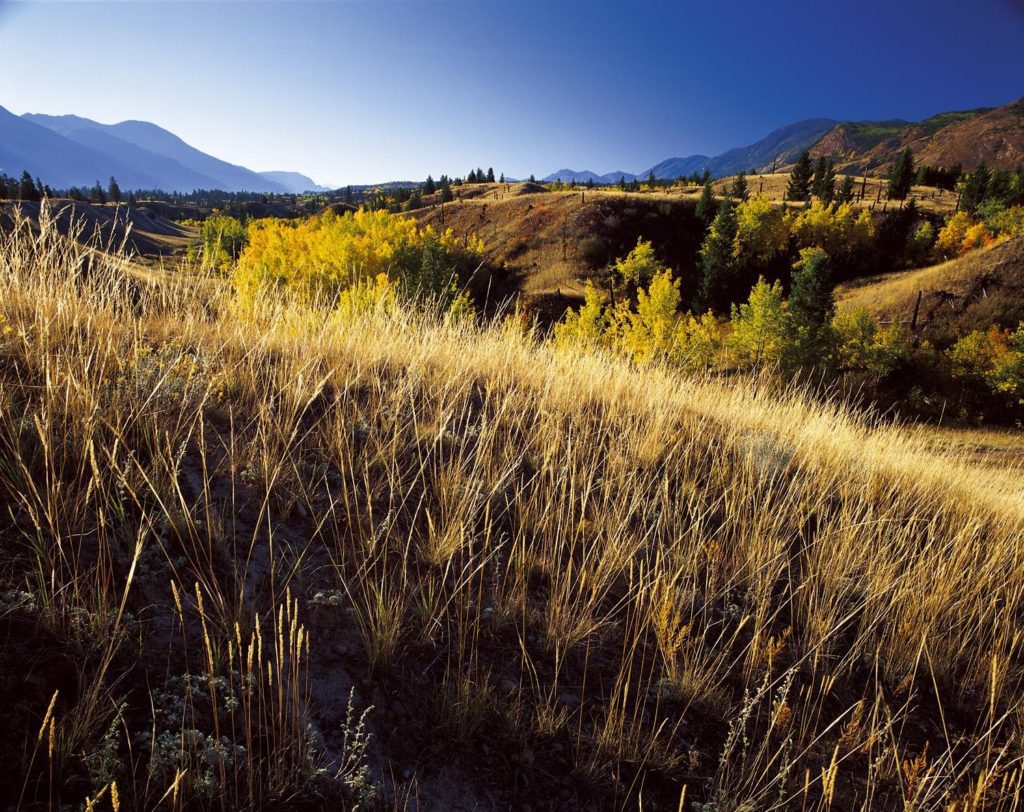
Ahead where the forests of aspens, Douglas-firs, and Western and lodgepole pines begin, you see a herd of elk, distinguishable by their white rumps.
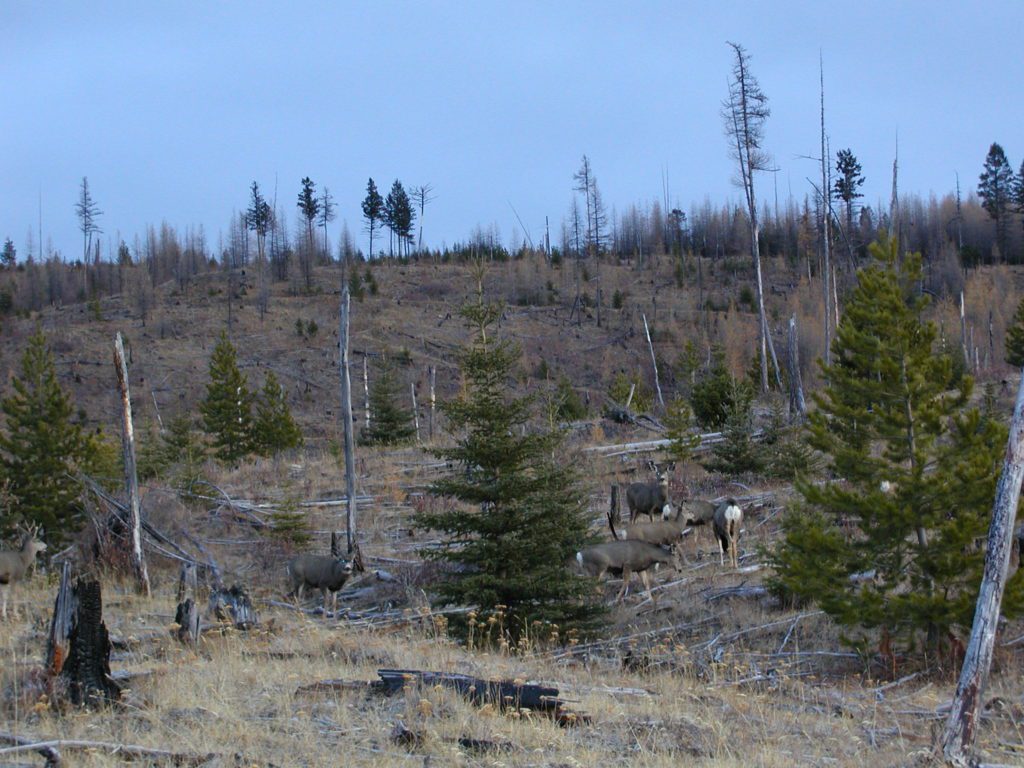
From the forests you move to the wetlands, so vibrant and green after the yellows and browns of the grasslands. Home to hundreds of bird species, along with beavers, muskrats, garter snakes and amphibians, this area is teeming with the sounds of life.
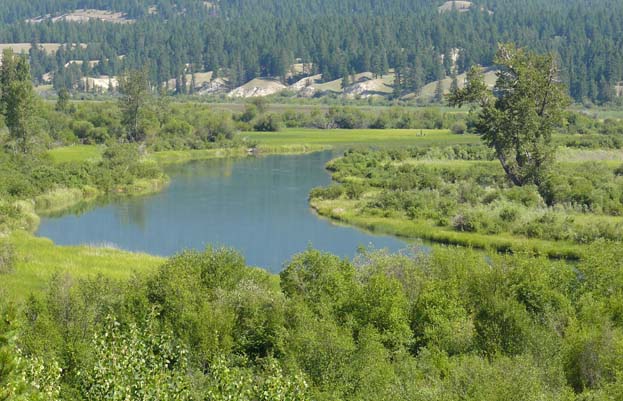
Finally you come upon the dusty hoodoos rocks for which this property is named. You hope to see a Blue-listed white-throated swift nesting on these formations now that they are protected.
The multiple ecosystems, the size, the varied topography and the range of elevations that you have seen while walking through Hoodoos supports one of the largest and most diverse assemblages of wildlife in the province.
“The Hofert/Hoodoos property is one of the largest and most critical wildlife habitat areas in the province. This investment helps to protect this rich and diverse ecosystem and provides an opportunity to manage habitat on a landscape level.”
- Don Krogseth, 2005 Chair of The Nature Trust of BC
Facts
- In 2003, the Nature Trust of BC acquired its largest property at 3,922 hectares, called Hoodoos. Located in the East Kootenays, this extensive property conserves abundant wildlife habitat including significant wetlands, grasslands and ungulate winter range.
- Potential and existing at-risk species on the property include the Red-listed American badger, and the Blue-listed rubber boa, sharp-tailed grouse, great blue heron, Lewis’s woodpecker and white-throated swifts.
- The numerous biogeoclimate zones along with the size, the varied topography and the range of elevations in this area supports one of the largest and most diverse assemblages of wildlife in the province.

